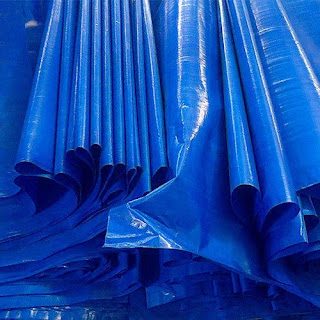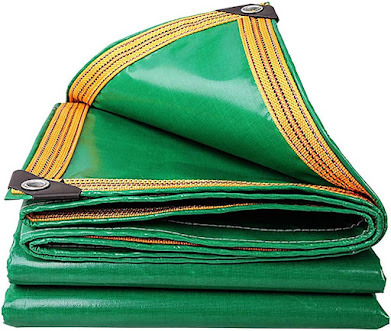Which Materials Make the Best Tarpaulin
Introduction
Tarpaulins, frequently alluded to as heavy-duty tarpaulin sheets, are flexible, substantial, and defensive covers utilized in a great many applications. From protecting building locales from the components to shielding merchandise during transportation, tarpaulins act as fundamental tools. Picking the right tarpaulin material is basic to guarantee sturdiness and usefulness. In this thorough investigation, we will talk about different materials that make the best tarpaulins and their particular ascribes.
Canvas Tarps
Canvas tarps are among the most customary and solid decisions. Produced using cotton, they offer excellent strength and sturdiness. heavy-duty tarpaulin sheets are known for their breathability, fundamental for forestalling buildup and shape. They are likewise impervious to tearing and abrasion, making them ideal for long-haul open-air use. Canvas tarps are generally utilized in the development business for safeguarding hardware and materials. Their regular water obstruction can be upgraded through medicines or coatings.
Pros
Magnificent toughness and longevity.
Breathable, forestalling buildup.
Tear and abrasion-safe.
Ideal for long-haul open-air use.
Can be made water-safe with medicines.
Cons:
Heavier and bulkier than some alternatives.
The underlying expense might be higher than other materials.
Polyethylene Tarps
Polyethylene tarps, generally alluded to as poly-heavy-duty tarpaulin sheets, are lightweight and affordable. These tarps are made from woven plastic and are well known for their large number of utilizations. They are waterproof and UV-safe, making them ideal for shielding things from the downpour and sun. Polyethylene tarps are frequently utilized for setting up camp, as ground covers, and for momentary weather insurance. They come in different thicknesses, with heavier variations offering increased toughness.
Pros:
Lightweight and easy to handle.
Affordable and widely available.
Waterproof and UV-safe.
Appropriate for momentary weather assurance.
Available in various thicknesses.
Cons:
vinyl Tarp
Vinyl heavy-duty tarpaulin sheets are famous for their extraordinary waterproofing abilities. Produced using polyvinyl chloride (PVC), these tarps are extraordinarily durable and impervious to both UV beams and cruel weather circumstances. They are normally utilized in modern settings, as truck and hardware covers, or as stockroom dividers. Vinyl tarps are available in a scope of varieties and can be customized to explicit sizes and thicknesses.
Pros:
Outstanding waterproof properties.
Incredibly durable and weather-safe.
Ideal for modern and long-haul applications.
UV-safe for broadened outside use.
Customizable concerning size and thickness.
Cons:
Heavier and less portable than some other materials.
Can be more costly than other covering choices.
Polypropylene Tarps
Polypropylene tarps, otherwise called polypropylene woven tarps, are a financially savvy decision for transient use. They are lightweight and impervious to mold, making them reasonable for circumstances where dampness is a worry. Polypropylene tarps are regularly utilized as impermanent covers for hardware, outside furnishings, and horticultural purposes. Their reasonableness and protection from spoiling make them an alluring choice for some.
Pros:
Lightweight and easy to ship.
Savvy for transient applications.
The buildup was safe for moist conditions.
Reasonable for safeguarding gear and open-air furniture.
Impervious to decaying.
Cons:
Not as durable as some other materials.
Less reasonable for long haul or uncompromising use.
Limited UV opposition.
Network Tarps
Network tarps, developed from woven network texture, are remarkable in their plan. They give halfway inclusion while permitting air and light to pass through. Network tarps are great for applications where ventilation and permeability are fundamental, for example, in building locales or as wall covers. They are impervious to wind and are well-known in breezy conditions.
Pros:
Fantastic ventilation and permeability.
Impervious to wind and UV beams.
Ideal for building destinations and fencing.
Lightweight and easy to handle.
Forestalls the aggregation of snow and ice.
Cons:
Limited assurance from downpours and direct daylight.
Not reasonable for every single weather condition.
Less flexible compared to strong tarps.
Conclusion
Choosing the right tarpaulin material is critical, as it can essentially influence the outcome of different activities and applications. Every material offers a particular arrangement of benefits and disservices, making it fundamental to think about the particular necessities of your undertaking. Canvas tarps are praised for their longevity and breathability, while polyethylene tarps are lightweight and financially savvy. Vinyl tarps succeed in modern settings, offering outstanding weather opposition, while polypropylene tarps are financially plan agreeable for transient use. With their remarkable plan, Cross-section tarps take care of particular applications requiring ventilation and permeability. By understanding the qualities of these materials, you can make an educated decision to guarantee your tarpaulin addresses your issues, whether for development, transportation, or sporting purposes.




Comments
Post a Comment